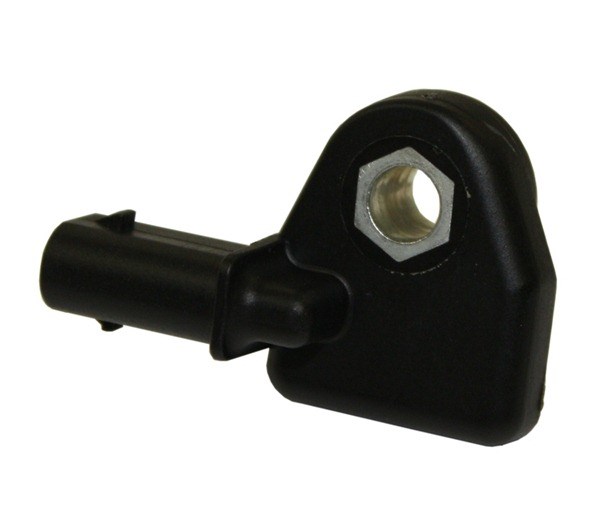TRW Multi-Axis Acceleration Sensors Developed
Admittedly, this appears to be nothing more than a plastic molded part with an inserted bolt-shaped metal component.
#electronics
Admittedly, this appears to be nothing more than a plastic molded part with an inserted bolt-shaped metal component.
What you can’t see is what it can do. It is a remote acceleration sensor (RAS) that TRW Automotive has developed. It’s capable of detecting impacts from more than one direction simultaneously, unlike traditional accelerometers, which are good for measuring acceleration data longitudinally (X-axis, or head-on) or laterally (Y-axis, or side).
So by mounting the multi-axis RAS in a B-pillar, for example, it can improve impact detection, as required by FMVSS214, as well as providing the intermediate crash sensing performance that can permit some vehicles to meet European regulations without the need for additional front-mounted sensors.

Martin Thoone, vice president, TRW Global Electronics engineering, said, “In some frontal accident scenarios—such as pole impacts near the center of the vehicle—impact may not be rapidly detected by traditional chassis-rail-mounted RAS single-axis sensors due to the relative lack of rigidity in this area of the vehicle. Front dual-axis RAS with Y-axis sensing can detect the lateral deformation of the vehicle sheet metal around the pole and more quickly sense that an impact has taken place.”
In addition to which, it is possible for a multi-axis sensor to measure vertical (Z-axis) and lateral acceleration, thereby predicting a rollover event without the need for a dedicated roll gyro.
All that in what appears to be not much.
RELATED CONTENT
-
On Electric Pickups, Flying Taxis, and Auto Industry Transformation
Ford goes for vertical integration, DENSO and Honeywell take to the skies, how suppliers feel about their customers, how vehicle customers feel about shopping, and insights from a software exec
-
The Koenigsegg Jesko Has An Amazing Engine
It is hard to believe that this is a vehicle in “serial” production with such extraordinary powertrain performance
-
GM Develops a New Electrical Platform
GM engineers create a better electrical architecture that can handle the ever-increasing needs of vehicle systems


.jpg;width=70;height=70;mode=crop)






